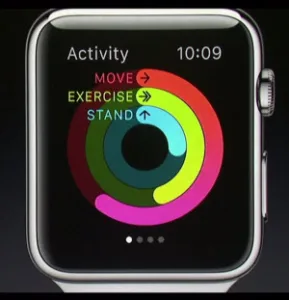We have held off from the flood of initial streams and comment that came with the Apple announcements on Monday. We’re covering the Apple watch in detail in one article and have a separate article (for both our newsletters) to look at the new MacBook.
This is the first new product category that Apple has entered since the arrival of the iPad in January 2010 and the first since the death of Steve Jobs. Apple CEO, Tim Cook, will probably be judged on the success of this product launch, but he has a hard act to follow.
The Keynote
Cook started his keynote with a video of a new store in West Lake, China – there was lots of glass and smiling faces. There have been six stores opened in the last six weeks, bringing the total to 21 in China, with a plan to be at 40 by the middle of 2016. Apple now has 453 stores globally and had 120 million customer visits in the last quarter.
AppleTV
The first product to be discussed was the AppleTV book. Cook introduced Richard Plepler who said that HBO has done a deal with Apple to supply HBO content via the Apple TV and other devices, on an exclusive basis for now. The HBO Now service will cost $14.99 per month from April (when the new series of Game of Thrones will appear.) Cook said that the AppleTV has sold 25 million units and that the price would be going down to $69.
iPhone
Turning to the iPhone, Cook said that recently Apple sold its 700 millionth iPhone and the company is growing its iPhone sales at twice the rate of the market, and iPhone is the best selling smartphone. He claims a 99% customer satisfaction rating and that Apple Pay is now with 2,500 banks. It has increased the number of locations with ApplePay to 700,000 in the US. Coca Cola has 40,000 vending machines that accept Apple Pay now, with a plan for more than 70,000 later in the year.
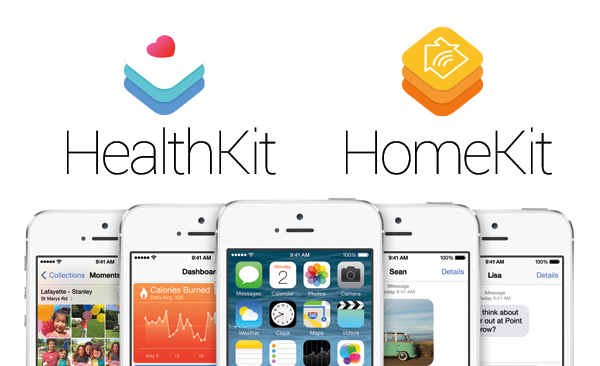 Cook said that “every major car brand” will support CarPlay, with 40 new cars to have the technology this year. Apple is also pushing HomeKit, although there was no announcement.
Cook said that “every major car brand” will support CarPlay, with 40 new cars to have the technology this year. Apple is also pushing HomeKit, although there was no announcement.
Cook claims that the biggest impact on people’s lives of the iPhone will be the impact on health. Jeff Williams of Apple came on to talk about medical research. It’s hard to get a lot of volunteers to help with research and consistent measured data is also hard to get. Communication during studies also helps to improve the experience. Williams announced ResearchKit, a software framework to help create apps for the iPhone and HealthKit. Apple has been working with a dozen or so institutions and a number of apps have already been developed. ResearchKit will be open source.
An app for Parkinson’s disease can detect tremors from small variations in tapping. It can also analyse the voice and a gait test can replace a subjective test previously undertaken by doctors. There appears to be a relationship between activity and tremors – the more activity, the less the tremors. Users can now measure this themselves. Apple has also worked on asthma, diabetes and heart projects. The asthma product can be used with a bluetooth inhaler and spirometers and that could help develop a better understanding of asthma triggers.
Breast cancer sufferers can also be helped by a new app. Data will not be seen by Apple and users can choose to opt in.
MacBook
Cook said that Apple has grown for 10 years at faster rates than the industry and in the last year when most notebook sales dropped, Apple’s sales grew.
The big news on the MacBook was a new model that uses the USB-Type C connector, as rumoured. Display Daily has looked at the display implications of the MacBook. The new model was introduced by Phil Schiller of Apple. The notebook weighs 2lbs and its 13.1mm thick at its thinnest, 24% thinner than the last one. The enclosure is all metal. The keyboard is full sized and extends to the edges of the notebook, which defines the size. Exisiting keyboards use a “scissor” switch type, but this can “bottom out” when pressed slightly off centre, so Apple has designed a “butterfly” mechanism. This is said to be four times more stable, but is also thinner. Each key has an LED.
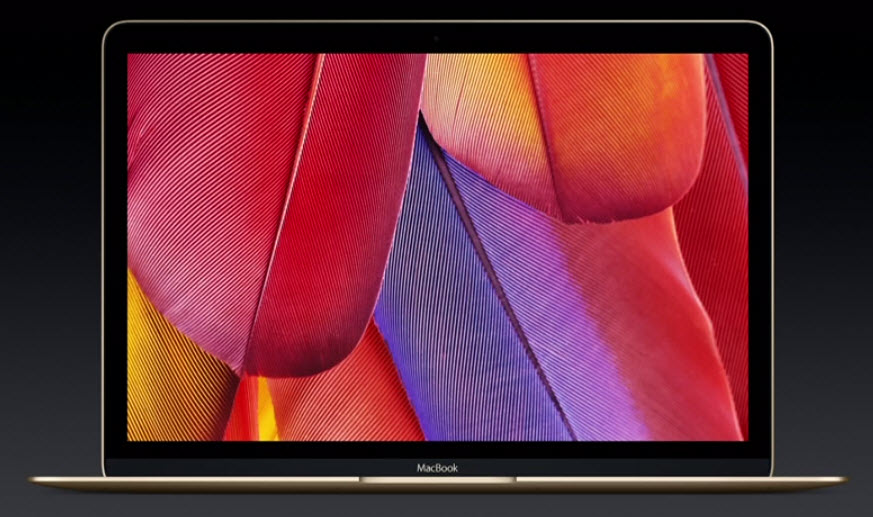 The MacBook has a 12″ Retina Display with 3.3 megapixels and an improved aperture ratio. The panel is less than a mm thick.
The MacBook has a 12″ Retina Display with 3.3 megapixels and an improved aperture ratio. The panel is less than a mm thick.
The “Retina” display is a 12″ unit with 2304 x 1440 (3.3 megapixels) and the panel is just 0.88mm thick. It has an improved aperture ratio which is said to use 30% less power for the same brightness as the last one. We looked at the display in more detail in this Display Daily (Notebook Computer Displays Evolve).
There’s a new glass-touch pad with four sensors with a “taptic” engine to give haptic feedback and the feel is said to be the same over all the pad. The degree of movement can be programmed for a softer or stiffer feel. The new pad has a “force click” mode, when it is pressed more strongly. The force click is used for special features in the OS.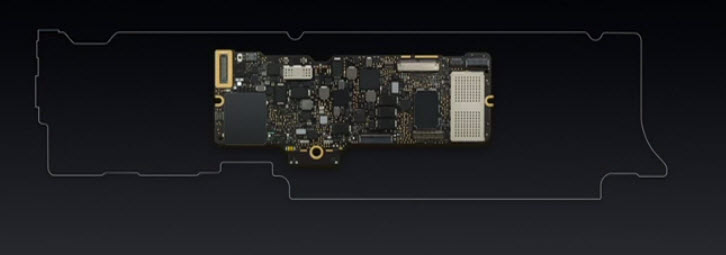 Apple’s logic board has shrunk by 67%
Apple’s logic board has shrunk by 67%
Moving to the inside of the MacBook and the new structure is pre-formed to fit. It is fanless and operates silently. The logic board has been shrunk by 67% compared to the last generation. It uses a Core M processor from Intel and is very efficient at just 5W. Most of the space is taken up by batteries! The batteries are made in “sheets” that are contoured and “terraced” to take up more of the space in the shell.
 Most of the inside of the MacBook is Battery!
Most of the inside of the MacBook is Battery!
The notebook has 802.11ac and Bluetooth 4 as, ideally, notebooks would be completely wireless.
The MacBook has just a single connector for power and that is the USB-C port. The cable is lighter and reversible. There will be adaptors from Apple and others for DisplayPort, HDMI and VGA. (Of course, the USB-C means an end to Apple’s magnetic power connector.)
 The MacBook side view shows the single USB-C
The MacBook side view shows the single USB-C
The new MacBook will be available in the colours of silver, “space grey” and gold. The PC meets Energy Star 6.1 and Epeat Gold.
The MacBook Air will be upgraded with new 5th Gen processors, Thunderbolt 2 and faster flash disks. The 13″ MacBook pro gets the upgrades and the touch force touch pad. Both ship from Monday.
Apple Watch
Finally Cook got to the watch, “the most personal Apple product we’ve ever created”. There are a number of designs, including stainless steel, aluminium and gold. Cook said it’s the most “revolutionary” timepiece – accurate within 50ms of UTC time. There are a lot of face choices from the stylish to the “fun”. The face is very configurable and there is a feature called “glances” for checking common data by swiping from the bottom of the face.
Messages can be received on the watch and with a microphone and speaker, you can make a call. You can use email. Apple watches can be connected together with other users. You can send your heartbeat or just send a “nudge”.
The watch tracks activity using an integrated optical heart rate meter and can nag if you have been seated too long. It does weekly activity summaries and a workout app.
Cook introduced a film by Christy Turlington Burns and she recently ran a half marathon wearing an Apple watch and came on stage.
The watch can be used with Siri, and for Apple Pay. Notifications can be received on your watch. The watch can show QR codes for airport check in. Hotels can have locks that respond to the Watch, meaning no check in at the hotel. The watch is configured and controlled from an iPhone.
The watch is available in two sizes, 1.3″ (38mm case) (272 x 340) and 1.5″ (42mm case) (312 x 390). All the Apple watches use flexible OLED displays and there is sapphire “glass” on the Apple Watch and Watch Edition, with Ion X strengthened glass on the Sport edition. The displays are being made by LG.
Battery life is “typically” 18 hours. There is a small magnetic charger. Apple didn’t talk about the CPU type being used, but said that the electronics are contained in a single resin-enclosed package.
There is a range of models from $549 to $1.099 depending on the size, model and material. There is a sport edition with an aluminium case. There’s a stainless steel version (also available in black) from April 24th. The gold Apple Watch Edition costs from $10,000 and sales start on April 10th.
Cook then showed the advert for the watch.
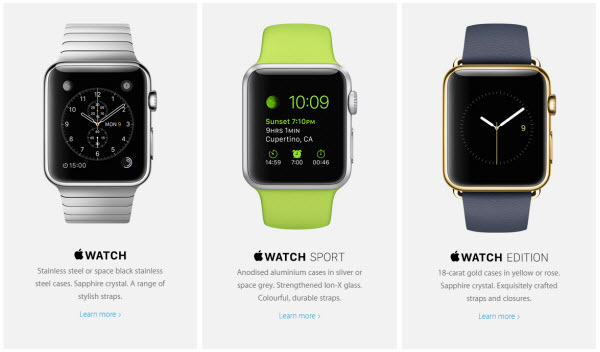
Analyst Comment
This was in the great tradition of Apple product launches. Personally, I prefer the Cook “understated” presentations, I found the Steve Jobs performances a bit rich for my taste, although he could whip up emotion.
I think the new MacBook looks very cool. A lot of effort clearly went into it and having just heard Samsung’s claims of “relentless innovation”, the story from Apple was much stronger. I do wonder about the single connector. Could Apple not have had a magnetic power connector (that feature nearly got me to buy a Mac when I tripped over a power cable in a cramped hotel room and broke the display). Without it, you need an adaptor just to charge and connect a mouse.
The watch will, no doubt sell a lot, especially to Apple fans, but I wonder if a gadget that will be dated in just a few years (in size, weight and battery life) will really have the prestige of a “heritage” watch. Given the state of technology, Apple has done a good job, but I think the Apple Watch 5 will be the one that I might like!
The HBO deal is a good one for Apple. It now has devices right up to 27″, so if it wants more form factors, it probably has to go into TV at some point. There are no signs that it has come up with something compelling as a TV strategy, but the world is beginning to seriously move to streaming and that will mean more content providers like HBO that may be happy to work with Apple. Of course, HBO content is not the key content for cable and satellite TV as it’s not time sensitive. It’s when Apple does a deal with ESPN or another sports network that we’ll know things are getting really serious. (BR)

